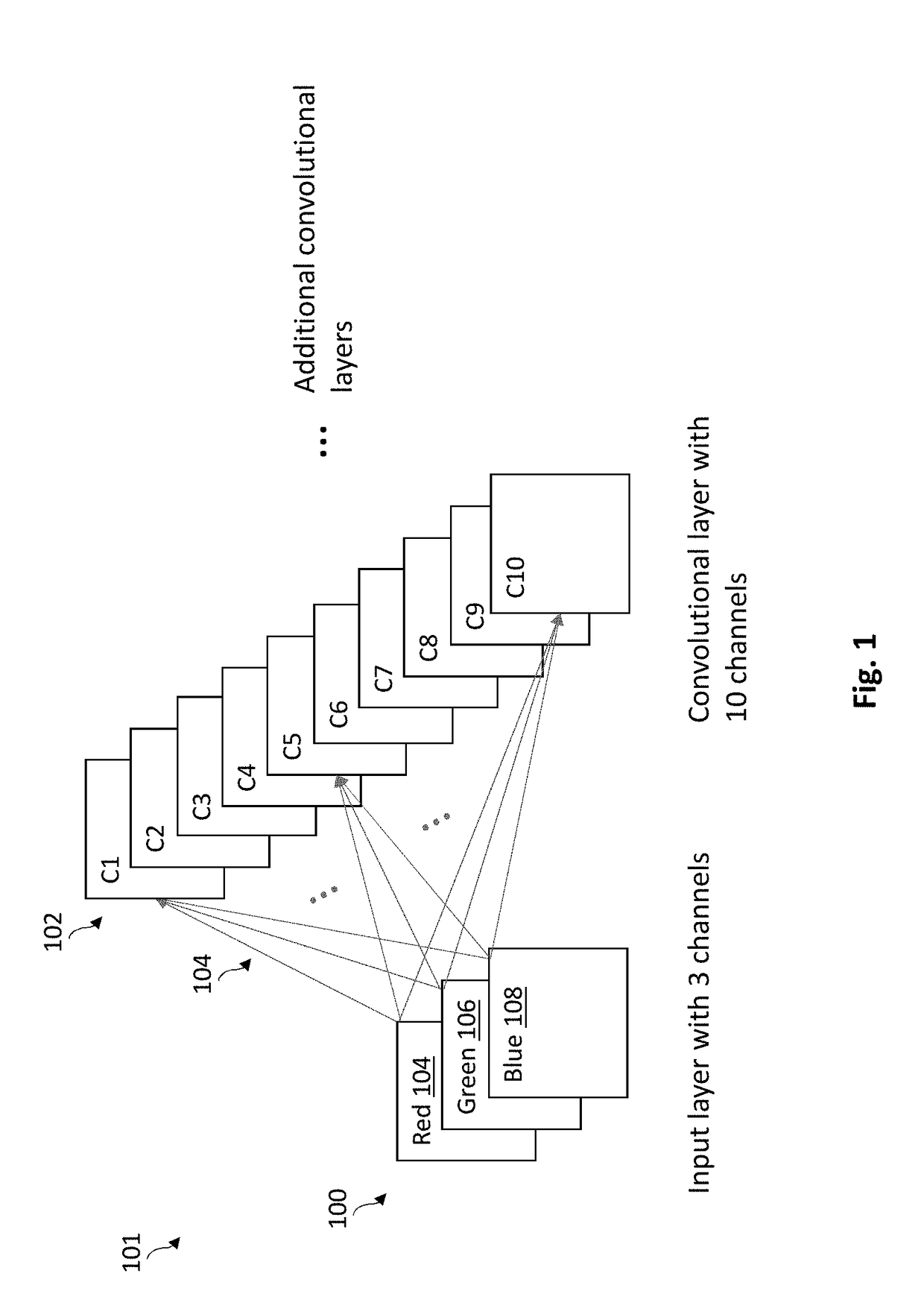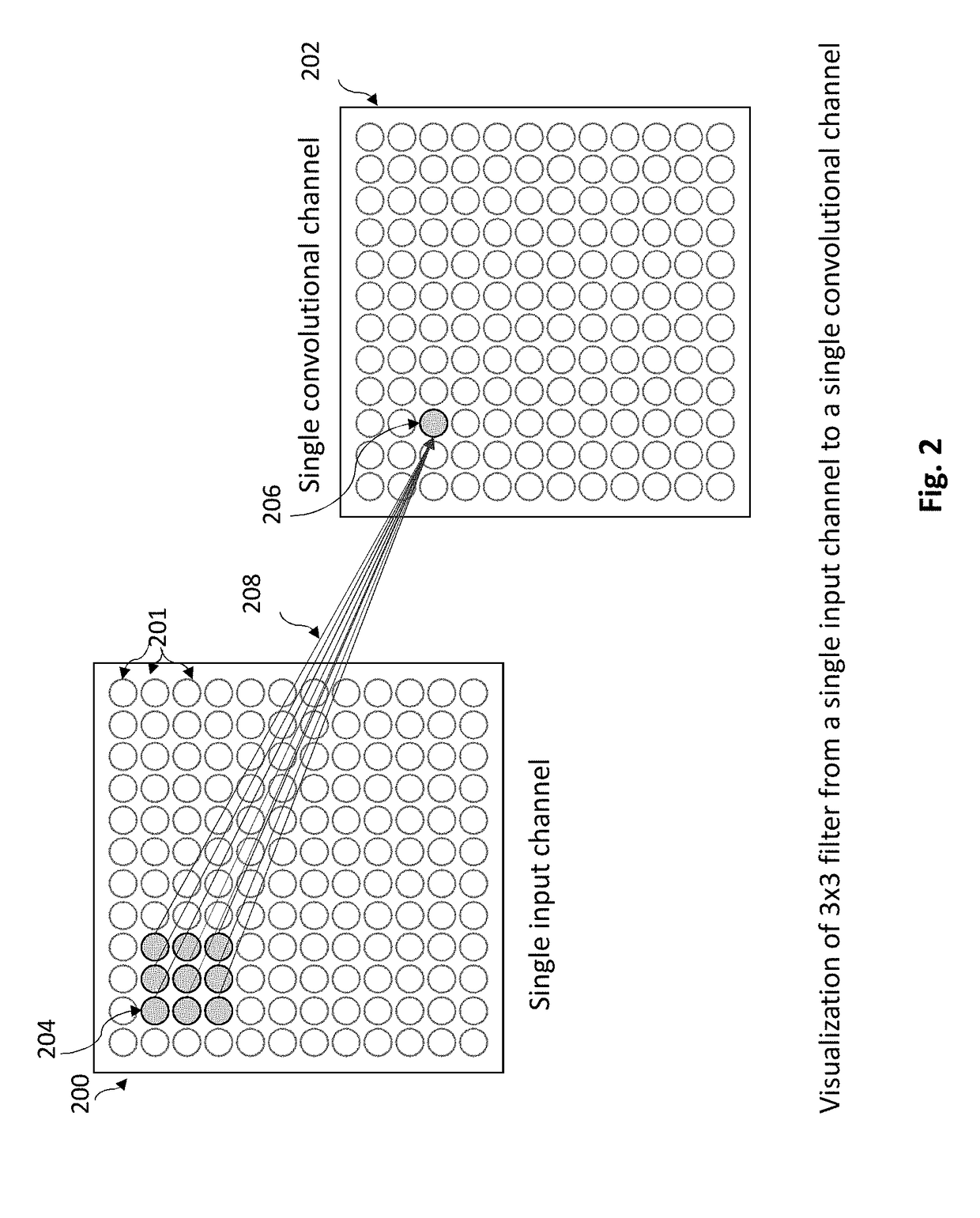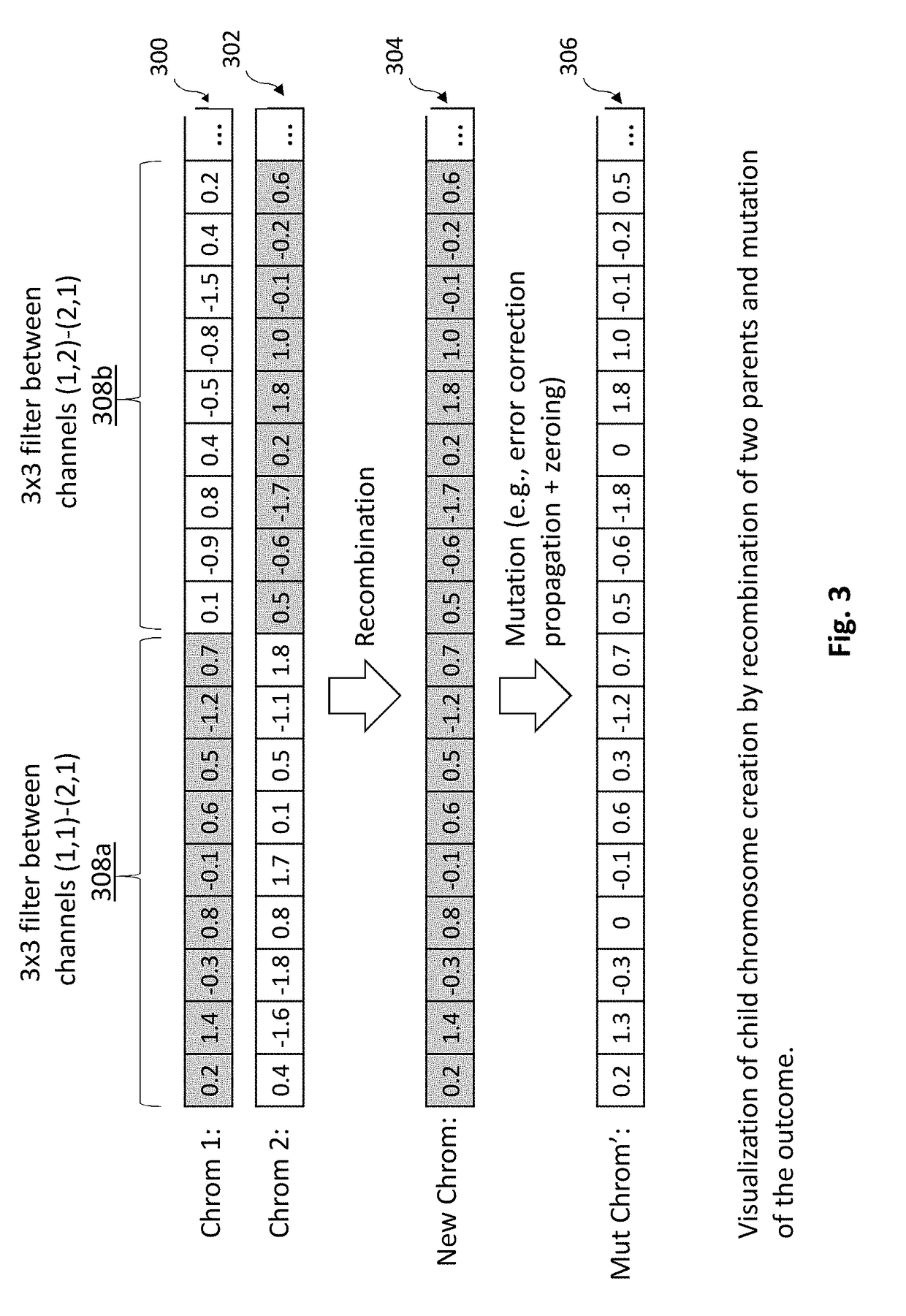System and method for efficient evolution of deep convolutional neural networks using filter-wise recombination and propagated mutations
a deep convolutional neural network and filter-wise recombination technology, applied in the field of deep learning using neural networks, can solve the problems of omission of potentially valuable information, nn much more efficiently, impractical and time-consuming for many problems, etc., and achieve the effect of limiting the growth of search space and encouraging sparsity in chromosomes
- Summary
- Abstract
- Description
- Claims
- Application Information
AI Technical Summary
Benefits of technology
Problems solved by technology
Method used
Image
Examples
Embodiment Construction
[0019]Embodiments of the invention provide a novel genetic algorithm that increases the speed and accuracy in which genetic algorithms converge in training NNs and yields more accurate resulting NNs.
[0020]A benefit of GA is the randomization of NN chromosomes by (1) recombination and (2) mutation that creates new random permutations of weights in chromosomes of NNs that were not found in any of the parent chromosomes. In contrast to other methods (e.g., backpropagation) that take small iterative steps to correct errors and refine the NN, this randomization makes large random leaps in the weights for a greater variety of the search space of possible weights. By searching a larger space of possible weight combinations than conventional methods, GAs have the potential to stumble upon a better chromosome or NN that the conventional methods that search a smaller space of weights. The downside of GA is that searching a larger space takes longer for the NN to converge (if at all). This is ...
PUM
 Login to View More
Login to View More Abstract
Description
Claims
Application Information
 Login to View More
Login to View More - R&D
- Intellectual Property
- Life Sciences
- Materials
- Tech Scout
- Unparalleled Data Quality
- Higher Quality Content
- 60% Fewer Hallucinations
Browse by: Latest US Patents, China's latest patents, Technical Efficacy Thesaurus, Application Domain, Technology Topic, Popular Technical Reports.
© 2025 PatSnap. All rights reserved.Legal|Privacy policy|Modern Slavery Act Transparency Statement|Sitemap|About US| Contact US: help@patsnap.com



